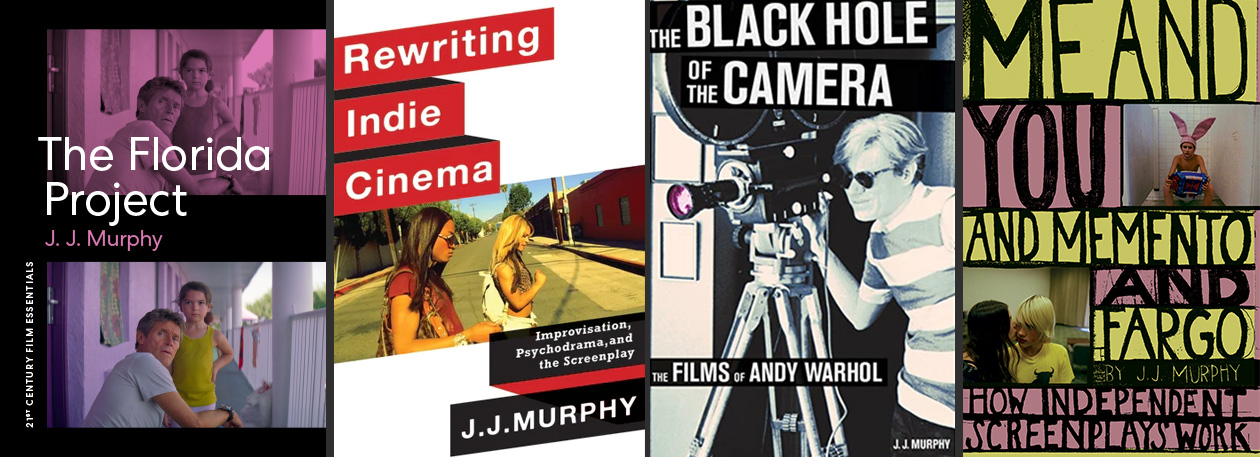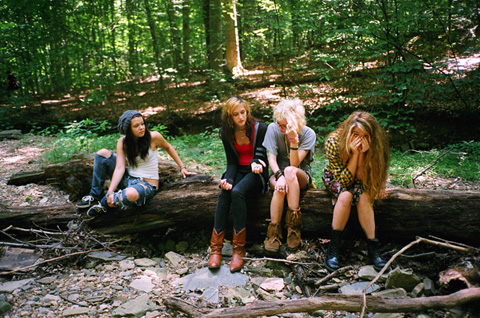

After financing fell through on a scripted feature about teenage metal heads in Baltimore, entitled Metal Gods, Matthew Porterfield put together a five-page treatment based on people and locations he discovered while developing it. Shot guerrilla-style in 12 days, the result turned out to be Putty Hill. Porterfield’s semi-improvised second feature mixes a simple fictional premise – the overdose of a twenty-four-year-old drug addict named Cory – with documentary elements, such as direct interviews. Porterfield uses Cory’s death to explore reactions of relatives and friends within a working class neighborhood of Putty Hill on the outskirts of Baltimore. In the process, he captures a sense of dysfunction and alienation that rivals that found in Chris Fuller’s dark vision of his home town of St. Petersburg Florida, Loren Cass (2009), or Harmony Korine’s celebration of white trash culture, Gummo (1997).
Porterfield’s impressive first film, Hamilton (2006), about an unwed teenage mother and the baby’s father set in Baltimore, screened at a number of film festivals and independent showcases, including the Wisconsin Film Festival (which is where I saw it), before seeming to fade away. Putty Hill shares the same formal rigor of Hamilton. It consists of a series of loosely connected scenes that occur the day prior to Cory’s funeral, as well as one shot in his pad afterward. The film is less a portrait of Cory (whose photo we finally glimpse at the wake) than of the people who knew him and the places he inhabited. Only gradually does his younger cousin, Jenny (Sky Ferreira, the film’s only professional actress), emerge as the central character of this group portrait.
Although she wasn’t really close to Cory, Jenny returns from Santa Monica, California for the funeral. Earlier, her father Spike (Charles Sauers), a local tattoo artist, discusses his nephew’s death and his own troubled past with a client. In a long interview in which she rides in a taxi cab, Jenny, like Clarissa from River’s Edge (1987), worries about not being able to cry at the funeral, but reveals sad details about her conflicted relationship with her dad. Later that night, she breaks down after watching him apply a tattoo in subdued light as he and three black men do drugs. As she weeps uncontrollably on the porch, he claims not to understand her behavior.
In a sense, Spike’s bewilderment epitomizes the detachment that these characters seem to experience in the face of everyday life. None of them can really fathom Cory’s death. They know it’s a tragedy, but are incapable of mustering any semblance of emotional loss. As human beings, they’ve become deadened by alcohol and drugs, or distracted by paintball skirmishes, tattoos, BMX bikes and skateboard parks. All of them seem to live with their mothers – their fathers are conspicuously absent from their lives. After Cody and his brother, Dustin, return from paint balling, their mom sits at the kitchen table with Cody’s black girlfriend and baby. She strums a guitar and sings a song for him (about “looking for your brain”), but Cody stirs his coffee loudly and rudely leaves to go to the bathroom. And the assembled group at Cory’s funeral gathering can’t even let his mother, Cathy, deliver her eulogy without creating loud distractions that nearly drown out her words.
The pre-funeral party turns into a bizarre event. It’s held in a karaoke bar, where folks drink pitchers of beer. Someone does an off-key version of “Amazing Grace” (a last-minute replacement for the Rolling Stones’ song “Wild Horses” that created copyright problems), but it soon lapses into empty testimonials and spirited dancing that might seem more suited to a wedding. Cory’s grandmother, Virginia, who resides in a retirement home and smokes cigarettes, refuses to attend. She prefers denial to having to grapple with her feelings. If some of this at times contains an undercurrent of humor, it’s because Porterfield so clearly understands and appreciates the nuances of this subculture and has been able to nail the milieu so accurately.
Porterfield’s poetic sensibility is reflected in the film’s stunning shot compositions. His scenes unfold at a languid pace, but each is a feast for the eye, as well as the ear. Jeremy Saulnier, who, like Porterfield, attended NYU film school, has to be one of the most gifted indie cinematographers. In Putty Hill, he uses a dark muted palette and as little light as possible, so that you can’t help but be reminded of the work of Gordon Willis. One of the strongest scenes in the film is one of Spike giving a tattoo by flashlight. And the final one where Cory’s sister, Zoe, and a friend visit his deserted housde contains so little light we can’t really make out their identities for certain. The scene, however, provides a fitting bookend to the film’s opening shots of Cory’s place, in which light creates reflections on the wall.
Porterfield’s staging of scenes is extremely imaginative in terms of image and sound. In an early scene in which Spike gives the guy a tattoo, the buzz of the tattoo gun nearly drowns out their dialogue, so that Porterfield resorts to subtitles. In another early scene, four teenage girls hang out together on a couch. Two of them get up to have a cigarette. The camera follows and frames them, but the remaining two offscreen are miked instead, causing a weird disjunction between what we’re hearing and seeing. When Zoe arrives in town for the funeral, she’s interviewed in front of a busy highway. In the night scene of the tattoo at Spike’s place, music drowns out the dialogue.
The director’s decision to use the documentary technique of interviewing the fictional characters is perhaps one of the most controversial aspects of Putty Hill. Who is the person asking the questions, and what is his relation to the narrative that is unfolding? Our local critic didn’t think it worked because he felt it created emotional distance from the characters. But with non-professional actors, who are not emotive to begin with, it tends to draw out the subjects, confusing the divide between subject and role in fascinating ways. Porterfield explains the strategy: “I guess I think about it as a disembodied voice – a voice coming from the camera – asking questions in the voice of the filmmaker, maybe the voice of the camera, but also the voice of the audience; but not as a physical body needing any reason to be there.”
Putty Hill provides additional proof of how digital cinema continues to transform indie film. It allows filmmakers such as Porterfield the liberty to shoot cheaply and quickly. In moving away from the written page, he’s been able to combine improvisation and visual storytelling as a means of providing a vitality that’s so often lacking in many conventional films today.
The film, which is being distributed by Cinema Guild, opened at the Sundance Cinemas Madison on Friday, two months after premiering in New York City. It will play for a week.